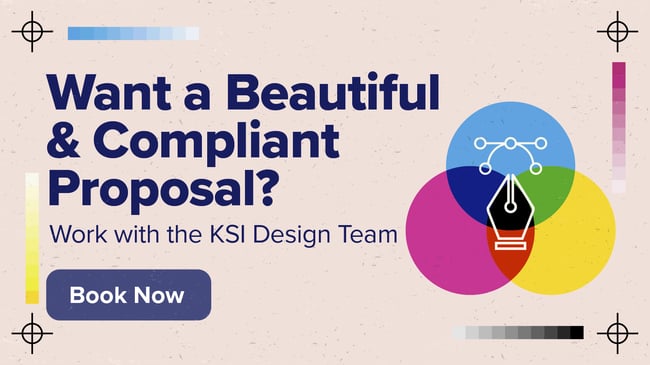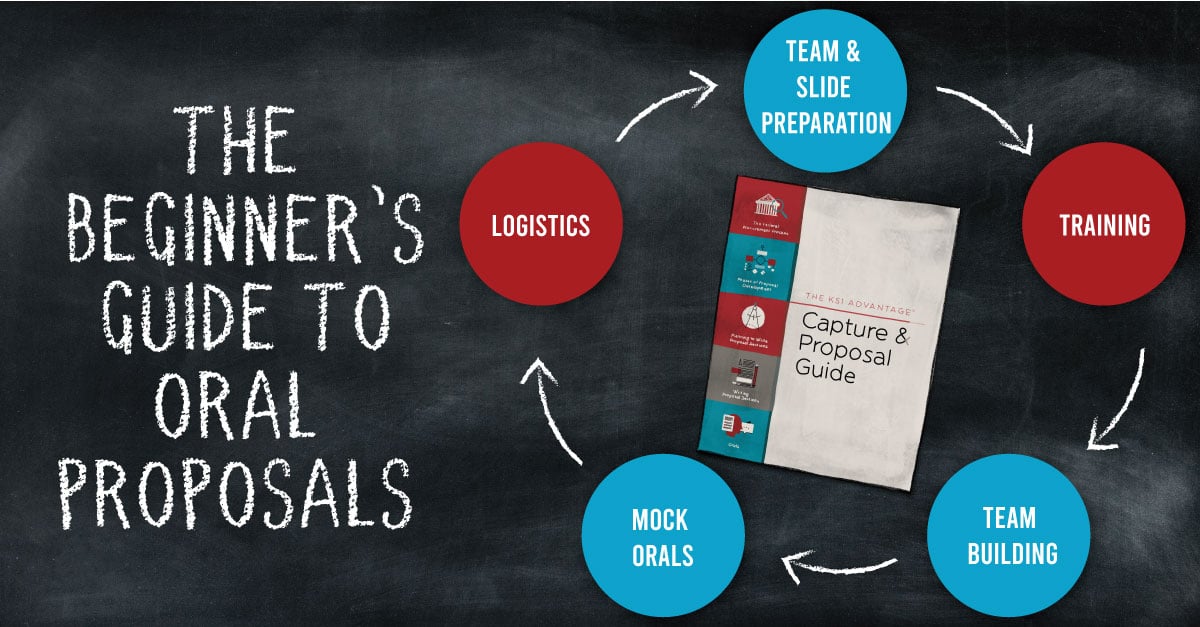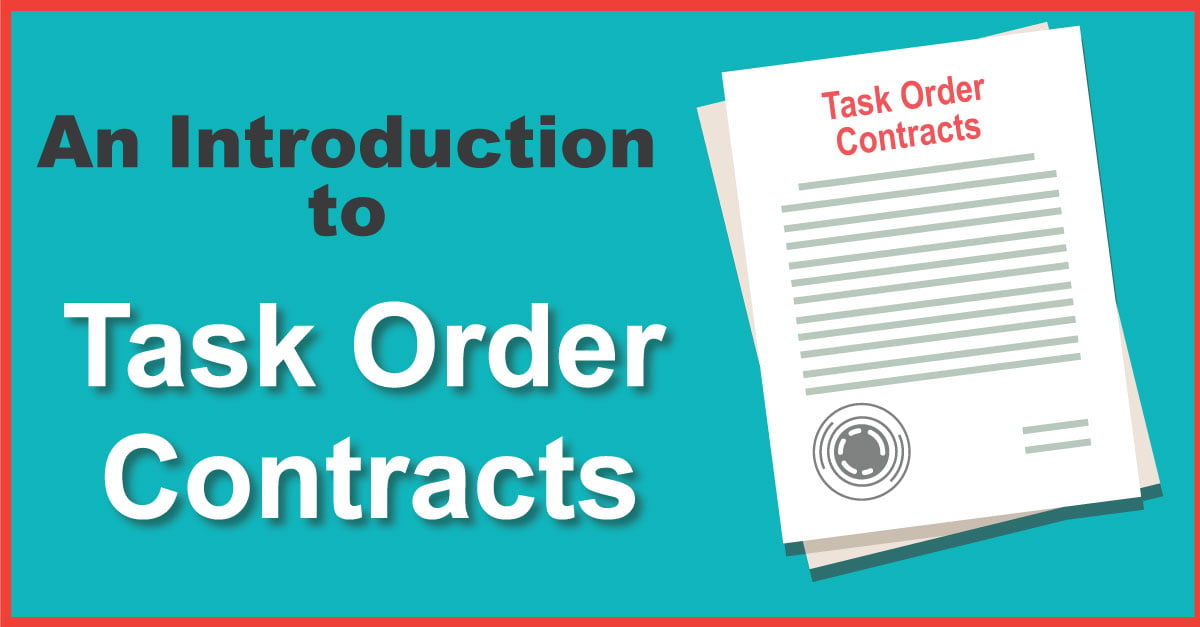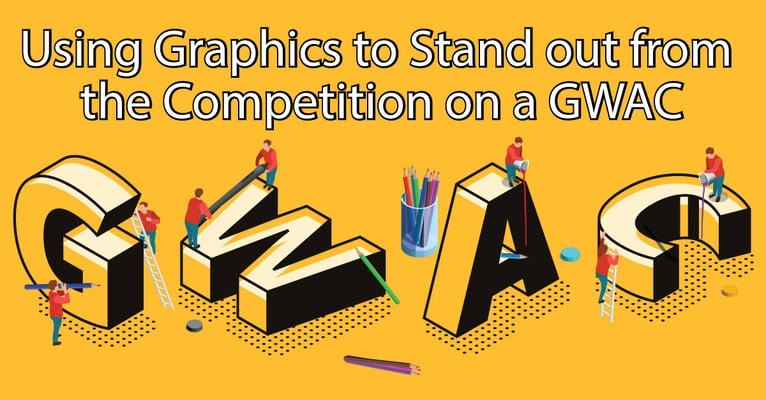
If you're exploring contract vehicle options in the federal market, chances are you're eyeing up a number of Government Wide Acquisition Contracts (GWACs).
While earning a spot on a GWAC does not guarantee new revenue, it puts your company in an excellent position to access solicitations and pursue new opportunities.
There are several key parts in proposal development—managing, writing, graphics, and production. Each piece of proposal development is critical to the overall success of your bid.
While the quality and color scheme of your graphics is important, what truly sets them apart is the message they convey. Your graphics should provide a visual representation of your solution, approach, and capability and make it easier to evaluate your proposal response.
Graphics are not used simply to break up large text areas to make a proposal easier to read; they are meant to provide a visual aid to the solution, approach, or capability that you are discussing in your proposal response.
GWACs are unique because they help narrow down the market to select a list of companies that meet certain criteria.
When crafting your graphics for a GWAC pursuit, remember that they serve a greater purpose beyond just securing a spot on the contract. These graphics can also be used for future task order proposal responses under the GWAC, so it is important to create them with a forward-thinking approach. To ensure cohesiveness in your proposal response, graphic design should be conducted in conjunction with proposal development.
In this article, we will discuss how graphics can help your submission and company stand out throughout the period of performance on a GWAC.
Pursuit of a GWAC
Procuring information technology (IT) solutions can be complex: requirements vary, market evaluation is challenging, and the government wants to standardize these procurements as much as possible. The purpose of a GWAC is to help agencies buy total IT solutions more efficiently and economically. Examples of GWACs include:
- 8(a) STARS III
- VETS 2
- Alliant II
Much like a traditional standalone request for proposal (RFP) response, the story you are telling should be tailored to the requirements, detail your solutions, and demonstrate your ability to perform the work to the government's level of expectation.
For a GWAC, the story you are telling is at a higher level than a standard standalone RFP.
Typically, you are detailing your ability at a company level, including technical capabilities, internal controls/process, and team structure. Graphics enhance this story and should be used strategically throughout your response.
- Why is your organization structure unique? Graphic.
- Have a unique process that you deploy? Graphic.
- Have a unique technology offering? Graphic.
- Have you developed an approach to provide a solution for a customer? Graphic.
- Use a technology stack that integrates in a certain way? Graphic.
Graphics can be complex, and it is critically important to understand who is developing them and why. This isn’t a job that your team puts off until the end of the response and everything is written. To ensure limited rework, your graphic designers need an understanding of how to read requirements, understand formatting, create an accurate depiction of the approach, and of course, stay on brand.
An area to focus on when you create a graphic in your proposal is the value of the colors.
Colors can represent emotions in the graphic and important meanings that you are trying to convey. An example is the risk management graphic below where blue is typically associated with trustworthiness and attention to detail, green provides a calming effect, and red re presents an area to aware of and be cautious. In this case, there are several moving pieces, but this graphic helps demonstrate that this company can successfully manage risks.
 Risk Management Graphic
Risk Management Graphic
Many organizations seek outside support for graphic design because of the skillset, tools, and time commitment required for solid graphics. This enables them to focus on developing and writing to the solution. At Key Solutions, we recommend building graphics in the Pre-RFP phase because that lets your team map a solution and approach that will trickle down to more section specific graphics.
There will always be RFP-specific graphics developed, but overarching processes, capabilities, and solutions should be created to be reused either in part or fully for additional responses, which will be detailed below.
In the graphic below, you can see the detailing of the approach, key areas of focus, and the overall strategy of the support, which are all enhanced with emotionally appealing colors.
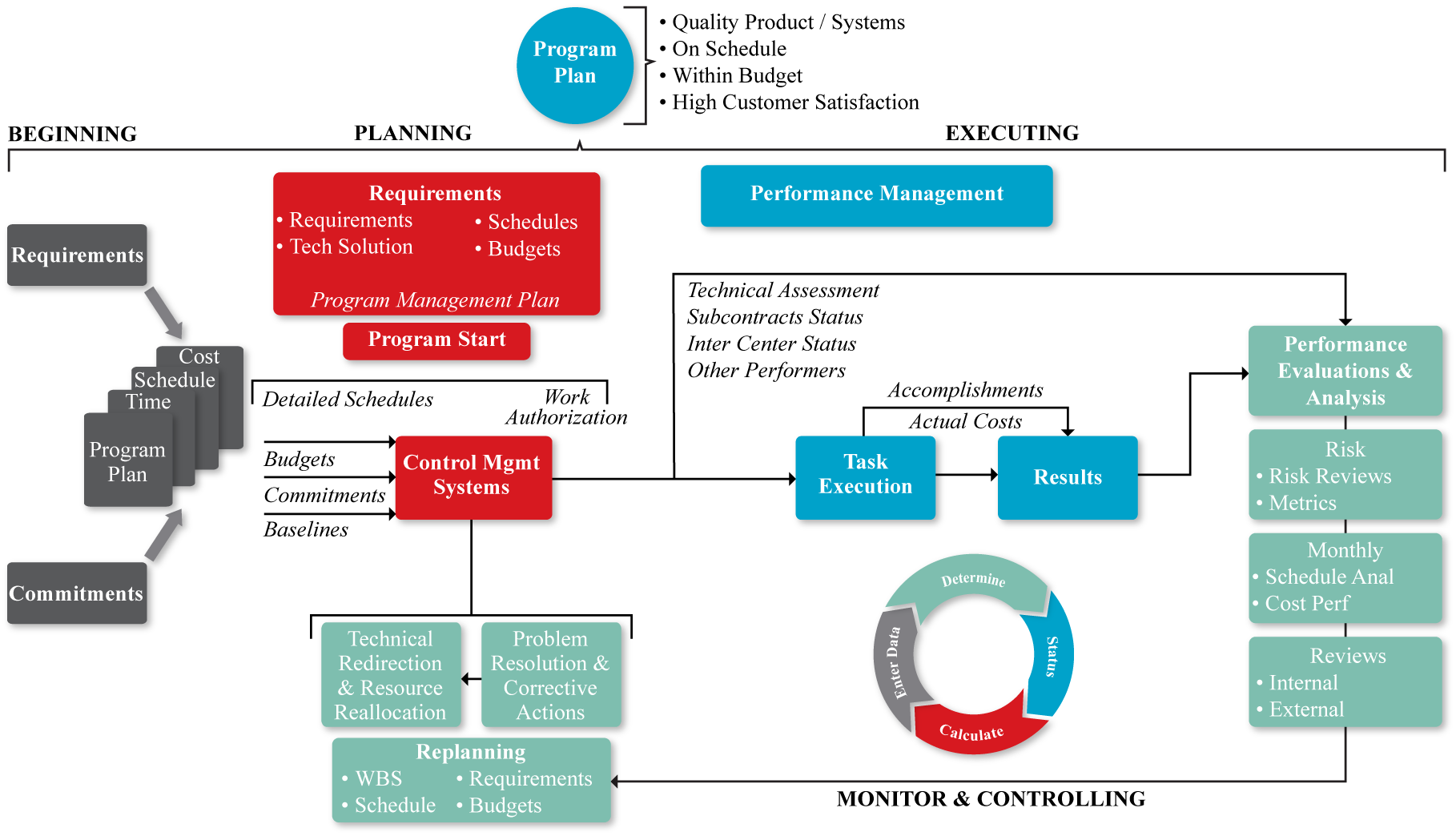 Delivery Performance Process Graphic
Delivery Performance Process Graphic
Task Order Responses
Graphic development takes time commitment and a focus on quality. Our team at KSI employs Association of Proposal Management Professional (APMP) certified graphic designers who understand how to make compelling and compliant graphics for a proposal. When possible, develop graphics with an understanding of how you can reuse them. If you followed the above and ensured that you were creating graphics to tell a story at the GWAC level, that story will trickle down into the task orders.
At KSI, we support organizations setting up their Program Management Office (PMO), including helping them set up what we call a Proposal or Task Order Factory to help streamline responses on a vehicle. GWACs are more encompassing than a standard Indefinite Delivery Indefinite Quantity (IDIQ), but the approach is similar.
One of the first steps we do with companies is help them standardize their content, including graphics.
- What can be reused?
- Can any of it be used in Business Development conversations?
- How can we build specific solutions off of them?
As you bring more subject matter experts (SMEs) into your organization, these graphics can also give them an understanding of your company’s internal processes and approach. Developing graphics that can be reused on task orders streamlines responses and ensures solution cohesion and an overall understanding of a company’s approach by their internal team.
How Do You Feel About Your Graphics?
Graphics are meant to help your team stand out, which is critical during a GWAC pursuit and while you respond to task orders released on the vehicle. Stand out, be deliberate, and utilize graphics to compel the evaluators.
Graphics evoke emotion; a detailed approach shows the customer the seriousness in which your team takes developing a response, and they will feel confident in knowing you take the same detail in helping them deliver on their mission.
Conclusion
Graphics are a critical component of a compelling proposal, and should not be an afterthought. Before RFPs are released, the team should invest time in developing solid baseline graphics that can be easily tailored and re-used to respond to task orders.
Graphic artists should also be involved during the pre-RFP phase to develop task order-specific graphics as the solution is developed. These graphics best practices will support a streamlined and agile GWAC response process and help improve the quality of your team’s task order responses.
If your team lacks graphic design expertise, it may be worth considering the services of a consultant like Key Solutions. A consultant can provide the necessary skills and tools to ensure your graphics are compelling and compliant, freeing up your team to focus on developing solutions and writing a winning proposal.



